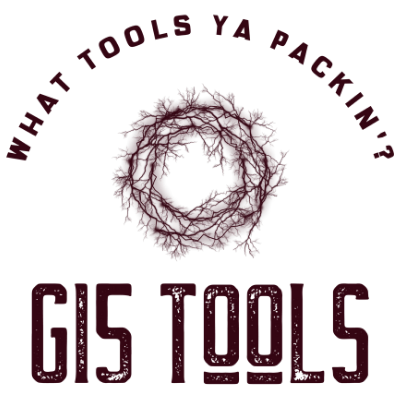Let’s be brutally honest: most LinkedIn recommendations are useless. They are a sea of generic, lukewarm platitudes like “John was a pleasure to work with” that offer zero real insight. Knowing how to write a linkedin recommendation that actually matters is a rare and powerful skill, but here’s the secret most people miss: it’s a strategic opportunity to build your own brand. A lazy, generic recommendation makes you look lazy and uninspired. A sharp, insightful, and generous one positions you as a thoughtful leader, a keen observer of talent, and a valuable professional connection.
In 2025, where professional reputations are built on authenticity and social proof, the recommendations you write are a public testament to your own credibility. They are a permanent part of your digital footprint, visible to every recruiter, potential client, and future boss who lands on your profile. Every recommendation you write is a marketing asset—for them, and for you. It’s a chance to demonstrate your values, your writing skills, and your ability to recognize and articulate excellence in others. Don’t waste it.
The Mindset Shift: From Chore to Strategic Generosity
Before your fingers even touch the keyboard, you need a fundamental shift in mindset. Writing a recommendation is not a chore you have to check off your to-do list. It’s a deliberate act of professional generosity. You are giving someone a valuable gift: your public endorsement and credibility.
When you write a powerful recommendation, you are implicitly saying:
- “I have a high standard for talent.”
- “I am insightful enough to identify specific, high-value skills in others.”
- “I am a confident and articulate communicator.”
- “I am a supportive and generous member of my professional community.”
That’s a hell of a lot more impactful than just being “nice.” With that in mind, let’s break down the architecture of a recommendation that gets noticed.
The Anatomy of a Killer Recommendation: A 4-Part Formula
Forget the rambling paragraphs. A recommendation that truly lands is structured, specific, and tells a mini-story. Follow this simple, four-part formula.
1. The Hook & Context: Establish Your Credibility
Start with a strong, definitive opening statement that immediately grabs attention and establishes the context of your relationship. This tells the reader why they should even listen to you. Be specific about your reporting structure and the duration of your work together.
- Weak: “I worked with Jane for a while.”
- Strong: “I had the distinct pleasure of managing Jane directly for over three years at Acme Corp, and she is, without a doubt, one of the most resourceful project managers I have ever worked with.”
2. The Specific Superpower (Illustrated with a Story)
This is the heart and soul of your recommendation. Do not use a laundry list of generic skills. Pick one or two of their true “superpowers” and bring them to life with a specific, concrete example. This is where you move from telling to showing.
- Weak: “Jane is great under pressure and has excellent communication skills.”
- Strong: “Jane’s superpower is her unflappable calm in the face of chaos. I’ll never forget the ‘Project Titan’ launch when our primary vendor pulled out 48 hours before go-live. While the rest of us were panicking, Jane calmly gathered the team, re-architected the deployment plan, and personally managed client communications with such confidence and clarity that we didn’t lose a single stakeholder’s trust.”
3. The Tangible Impact: Connect Skills to Results
Now, connect that story to a tangible business outcome. How did their superpower benefit the team, the project, or the company’s bottom line? If you can, use numbers, percentages, or quantifiable results. This transforms your praise from a nice opinion into a business case.
- Weak: “She helped the project succeed.”
- Strong: “Her leadership during that crisis didn’t just save the launch; the new deployment plan she created ended up being 20% more efficient, and our client satisfaction score for that project was the highest of the year. She turned a potential disaster into a massive win.”
4. The Enthusiastic Closing: A Clear, Forward-Looking Endorsement
End with a strong, unequivocal, and forward-looking statement. Summarize their key value and make it clear that you would be thrilled to work with them again. This is the final, powerful stamp of approval.
- Weak: “I’m sure she will do well in the future.”
- Strong: “Jane is the kind of professional who not only elevates the work but also elevates the entire team around her. She would be an absolute asset to any organization, and I would hire her again in a heartbeat. She has my highest and most enthusiastic recommendation.”
The Other Side: How to Gracefully Decline a Request
What happens when someone you barely know, or someone you can’t honestly endorse, asks for a recommendation? A bad or dishonest recommendation still reflects on you. Here’s how to handle it with professionalism and grace.
- The “I Don’t Know You Well Enough” Angle: This is for the person you only had a few meetings with.
- Script: “Hi [Name], thanks so much for thinking of me. Because we only worked together briefly on [Project], I don’t feel I could write the kind of detailed, specific recommendation that would truly do you justice. I wouldn’t want to provide a generic one that doesn’t highlight your specific accomplishments.”
- The Pivot to an Endorsement: This is a great middle-ground.
- Script: “Hi [Name], I’d be happy to endorse you for your skills in [Skill X] and [Skill Y], as I saw those in action. However, I don’t have enough direct experience with your work to write a full recommendation. Hope that helps!”
- The Honest (But Kind) Decline: For someone you managed but who underperformed.
- Script: “Hi [Name], I appreciate you reaching out. I’ve given it some thought, and unfortunately, I don’t think I’m the right person to provide a recommendation for you at this time. I wish you the very best of luck in your job search.” (You don’t need to give a reason. Be polite, be firm, and move on.)
Conclusion: Your Generosity is Your Brand
Ultimately, writing a great LinkedIn recommendation is one of the easiest and most powerful ways to build your professional karma and strengthen your network. It’s a five-minute investment that pays long-term dividends for both you and the recipient. By being specific, telling a story, and focusing on impact, you move beyond empty platitudes. You create a valuable asset that showcases their talent and, in the process, proves that you are a leader who knows how to recognize it.





